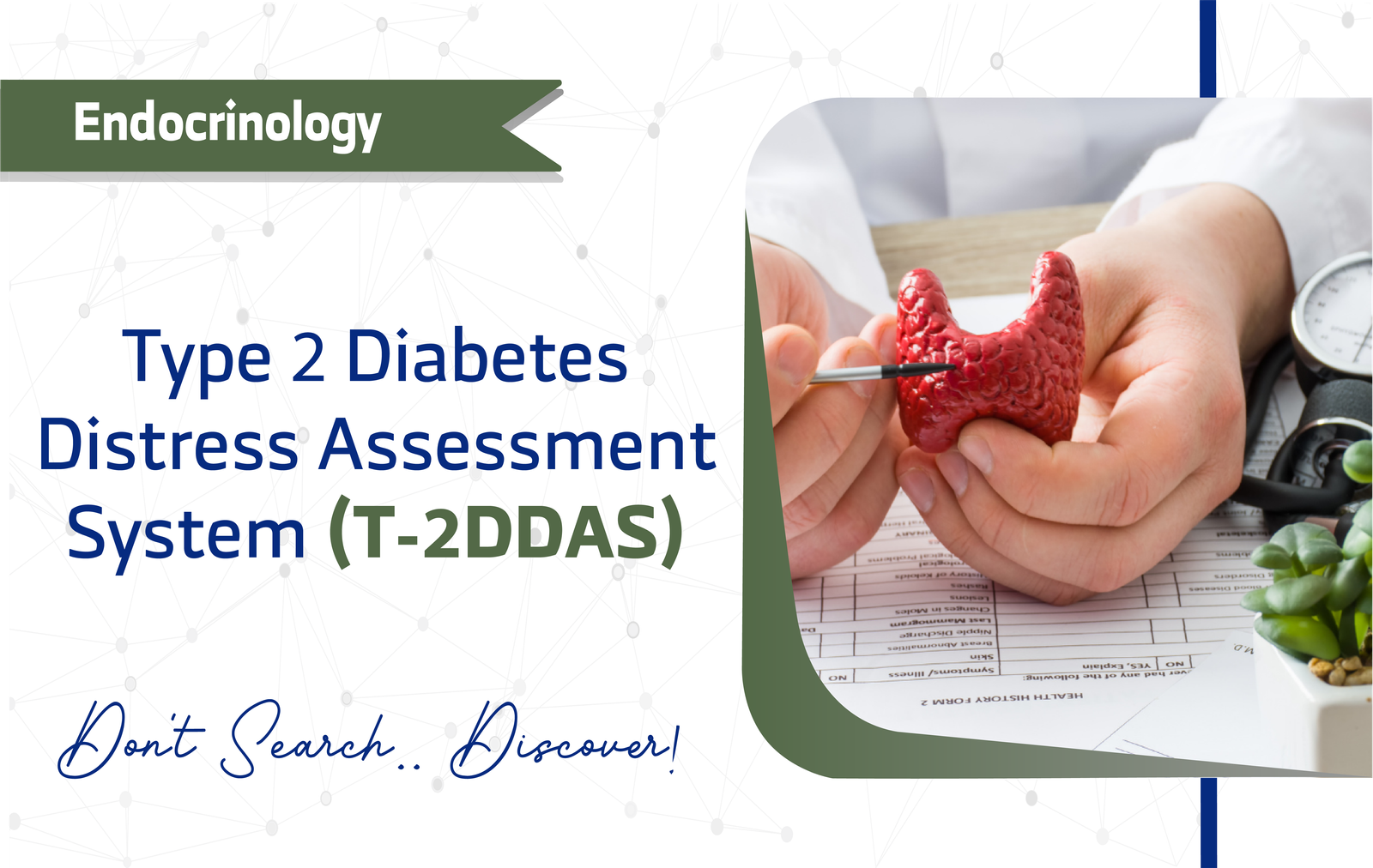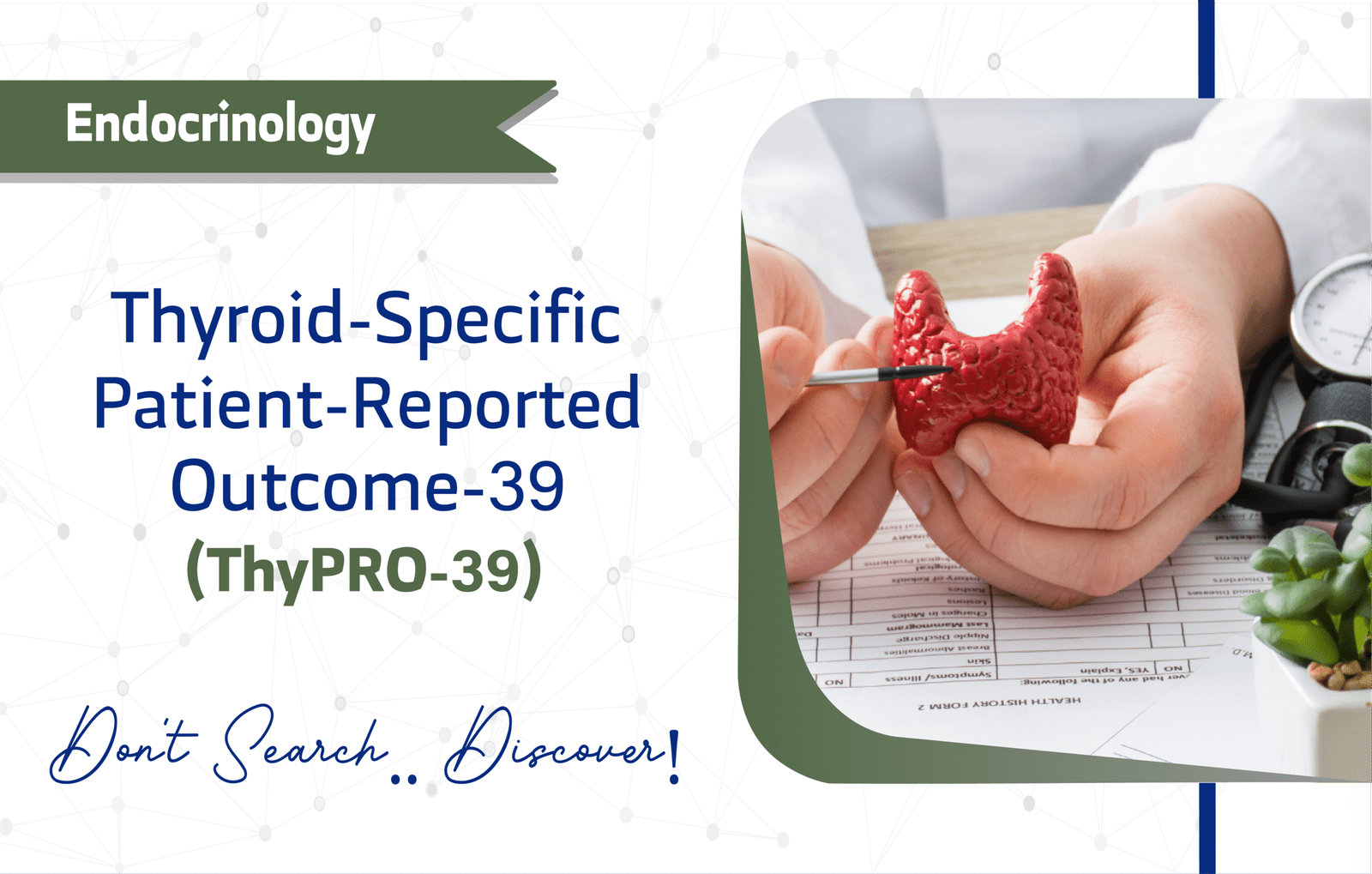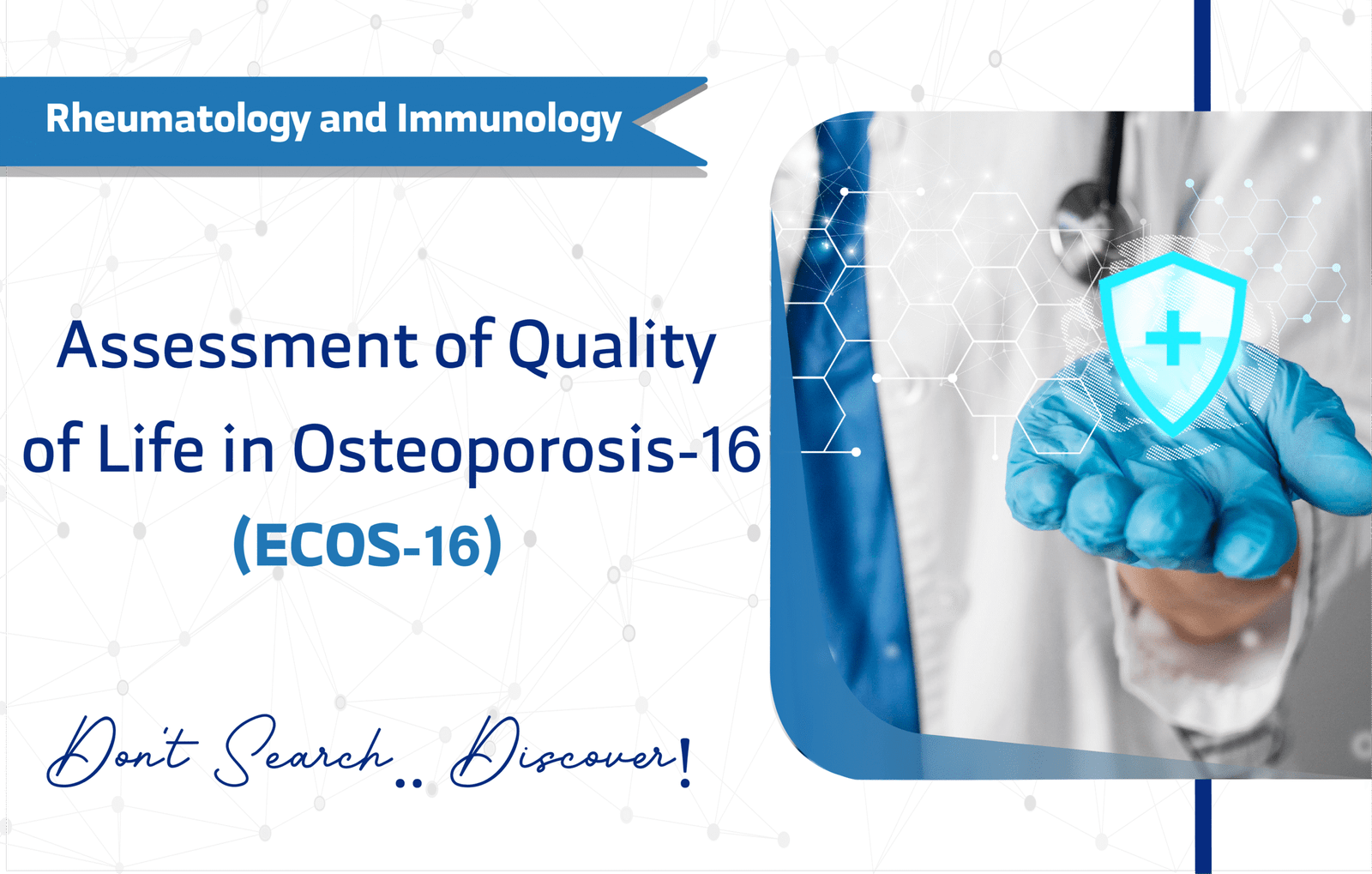Introduction
The Type 2 Diabetes Distress Assessment System (T2-DDAS) is a pivotal tool designed to evaluate diabetes-related emotional distress in adults with type 2 diabetes (T2D). Developed by William H. Polonsky, Lawrence Fisher, Danielle Hessler, Usha Desai, M. Perez-Nieves, and collaborators, and published by the Behavioral Diabetes Institute (BDI), the T2-DDAS was first validated in 2022, with subsequent studies affirming its utility between 2022 and 2024, this questionnaire addresses both the intensity and sources of distress, aligning with American Diabetes Association (ADA) guidelines for psychosocial care.
Consequently, it has become an essential instrument for researchers and clinicians aiming to enhance patient outcomes through targeted interventions. With over 25 citations on Google Scholar, its growing adoption underscores its relevance in diabetes care.
Key Features of the T2-DDAS
Purpose and Use of the T2-DDAS
The T2-DDAS was specifically designed to assess diabetes-related emotional distress in adults with Type 2 Diabetes (T2D). Furthermore, it identifies both the intensity of distress through its Core Scale and the specific factors contributing to it via its Sources Scale. Specifically, it helps clinicians screen for distress, monitor its progression, and plan treatments, while researchers use it to study psychosocial impacts in clinical trials. Moreover, its alignment with ADA guidelines ensures its applicability in holistic diabetes management.
Target Population
Designed for adults aged 18 and older, the T2-DDAS is suitable for:
- Young adults (18–24).
- Middle-aged adults (25–44).
- Older adults (45–64).
- Seniors (65+).
Thus, its broad applicability makes it a versatile tool across diverse patient demographics.
Structure of the T2-DDAS
The T2-DDAS comprises 29 items, divided into:
- Core Distress Scale: 8 items assessing the emotional burden of living with T2D.
- Sources Scale: This section includes 21 items, organized into 7 subscales with 3 items each, targeting practical challenges patients face. These sub-domains include:
- Management Demands (3 items)
- Hypoglycemia Concerns (3 items)
- Interpersonal Issues (3 items)
- Healthcare Provider Challenges (3 items)
- Shame/Stigma (3 items)
- Long-Term Health Worries (3 items)
- Healthcare Access Barriers (3 items)
Administration Format of the T2-DDAS
The T2-DDAS is versatile, supporting multiple administration formats:
- Paper-based
- Digital (online)
- Interview (in-person)
- Phone/video call
Its self-administered nature requires no specialized training, enhancing its usability in diverse settings. The questionnaire takes approximately 15-30 minutes to complete, making it a feasible addition to clinical workflows.
Scoring and Interpretation
Scoring Method
The T2-DDAS employs a 1–5 Likert scale (1 = “Not a problem” to 5 = “A very serious problem”). Clinicians calculate scores as follows:
- Core Scale: Sum scores from 8 items and divide by 8 (or 7/6 if fewer items are completed, requiring at least 6). A mean score ≥2.0 indicates clinically significant distress.
- Sources Scale: For each subscale (e.g., Hypoglycemia Concerns), sum 3 items and divide by 3. Higher scores indicate greater impact of that distress source.
For example, summing items 11, 17, and 27 (e.g., scores of 3, 4, 2) for Hypoglycemia Concerns yields (3+4+2)/3 = 3.0. Notably, combining subscale scores is not recommended; instead, clinicians review high-scoring subscales individually to identify key distress contributors.
Further Explanation:
To score, sum the scores across all eight items (1 to 5) and divide by 8:
- Hypoglycemia: sum items 11, 17, 27, then divide by 3.
- Long-term Health: sum items 12, 18, 24, then divide by 3.
- Healthcare Provider: sum items 13, 16, 28, then divide by 3.
- Interpersonal Issues: sum items 10, 21, 29, then divide by 3.
- Shame/Stigma: sum items 14, 20, 22, then divide by 3.
- Healthcare Access: sum items 9, 23, 25, then divide by 3.
- Management Demands: sum items 15, 19, 26, then divide by 3.
What if all 8 items are not completed?
- If only 7 items are completed, sum the scores of the items and divide by 7.
- If only 6 items are completed, sum the scores of the items and divide by 6.
For questions 9-28: This scale assesses each of seven common Sources of diabetes distress for adults with type 2 diabetes.
- Each Source refers to a specific aspect of living with and managing diabetes that can lead or contribute to diabetes distress for a particular individual. The higher the score, the more impactful that Source is likely to be in contributing to diabetes distress for this individual.
Interpreting Core Distress Scores
To score the Core Distress Scale, one sums the scores across all eight items (1 to 5) and then divides by 8 to obtain a mean score. A mean score of less than 2.0 indicates no significant distress, whereas a score of 2.0 or higher signifies clinically significant distress. A minimum of 6 completed items is required for an accurate score on the Core Distress Scale.
Interpreting Sources Scale Scores
For the Sources Scale, each of the seven subscales should be scored and considered individually. It is crucial to note that summing across Sources into a single overall score or combining scores across Sources is not recommended. A review of the highest-scored Sources helps identify which aspects of living with and managing diabetes are most impactful for the individual. Each subscale score is calculated by summing the scores of its three items and dividing by 3.
Languages and Availability
The T2-DDAS is available in:
- English
- Spanish
- Hindi
Facilitating its use in diverse populations. However, additional translations may be necessary to address language barriers in global settings.
Reliability and Validity
The T2-DDAS is classified as highly reliable and valid. Its Core Scale boasts a Cronbach’s alpha of 0.91, demonstrating excellent internal consistency. While some Sources subscales show a Cronbach’s alpha ranging from 0.53–0.88, subscales with an alpha below 0.70 suggest lower internal consistency for those specific domains. Validation studies, such as those published in 2022 and 2024, confirm its robustness for assessing diabetes distress (2022; 2024). These studies highlight its sensitivity to emotional and practical challenges in T2D management.
Clinical Utility and Applications
The T2-DDAS is highly versatile, serving multiple roles in clinical and research settings:
- Screening: Identifies patients with significant diabetes-related distress.
- Monitoring: Tracks changes in distress over time, especially during treatment.
- Treatment Planning: Informs tailored interventions based on specific distress sources.
- Research: Supports clinical trials by providing reliable data on psychosocial outcomes.
Additionally, its ability to generate clinical reports automatically when completed online enhances its practicality in busy clinical environments.
Cost and Licensing of the T2-DDAS
The T2-DDAS is free for clinical and research use via Behavioral Diabetes Institute. This open access policy promotes its widespread adoption and integration into various healthcare and research environments.
Related Questionnaires and Other Versions
Researchers and clinicians may find it useful to be aware of other questionnaires that are similar or complementary to the T2-DDAS, such as:
- DDS-17: A shorter Diabetes Distress Scale.
- PAID (Problem Areas in Diabetes): Another tool for assessing diabetes-related emotional challenges.
Additionally, other versions of the T2-DDAS exist, including:
- T1-DDAS (Type 1 Diabetes Distress Assessment System): A version tailored for type 1 diabetes patients.
- the DDS-2: a shorter version of the Diabetes Distress Scale.
These related instruments provide additional options for researchers studying diabetes distress across different populations.
Limitations and Considerations
However, despite its strengths, the T2-DDAS has a few limitations:
- Length (Too Long): Some patients may find the 29-item questionnaire lengthy.
- Self-report measure: Respondents may be influenced by social desirability bias or personal interpretation.
- Language Barriers: Limited translations may restrict its use in diverse populations.
- Limited Validation Studies: Further cultural validation is needed to ensure global applicability.
- Social Desirability Bias: This is inherent in self-report measures, where patients might underreport symptoms.
Additional Resources
- You can access the online assessment test here.
- Access the original validation study.
- You can access the questionnaire as a PDF here
- For inquiries, contact info@behavioraldiabetes.org.
- or through the Behavioral Diabetes Institute’s official page.
Frequently Asked Questions (FAQ)
- Who can use the T2-DDAS?
Clinicians, researchers, and healthcare providers use the T2-DDAS for adults aged 18 and older with type 2 diabetes. - How long does it take to complete the T2-DDAS?
Patients typically take 15 to 30 minutes to complete the T2-DDAS, making it suitable for clinical and research settings. - How is the T2-DDAS administered?
The questionnaire can be administered via paper, digital, interview, or phone/video call formats, offering flexibility in usage. - Is there any cost to using the T2-DDAS?
The T2-DDAS is free for non-commercial use. For commercial or funded academic projects, permission from the Behavioral Diabetes Institute may be necessary.
A word from ResRef about the T2-DDAS
The T2-DDAS bridges a critical gap in diabetes care by addressing both emotional and practical distress, offering a modern, actionable tool for holistic patient management. Its dual-scale structure enables tailored interventions, though broader cultural validation is still needed.
References
- Fisher L, Polonsky WH, Perez-Nieves M, Desai U, Strycker L, Hessler D. A new perspective on diabetes distress using the type 2 diabetes distress assessment system (T2-DDAS): Prevalence and change over time. J Diabetes Complications. 2022 Aug;36(8):108256. doi: 10.1016/j.jdiacomp.2022.108256. Epub 2022 Jul 5. PMID: 35810147. Study link.
- Sharma B, Tripathi P, Kadam N, Tiwari D, Vyawahare A, Kathrikolly T, Ganla M. Psychometric validation of type 2 Diabetes Distress Assessment System in an Indian type 2 diabetes population. Sci Rep. 2024 Dec 30;14(1):32059. doi: 10.1038/s41598-024-83681-0. PMID: 39738402; PMCID: PMC11685486. Study link.








